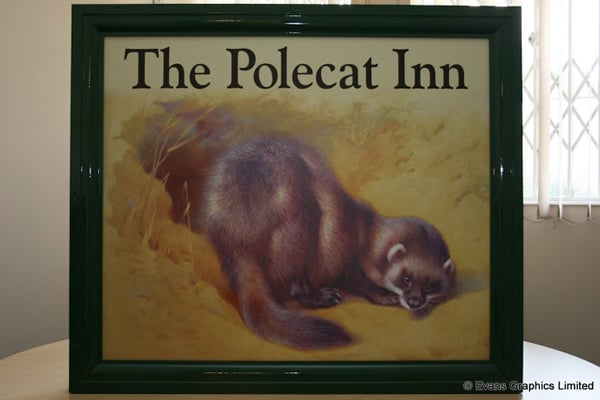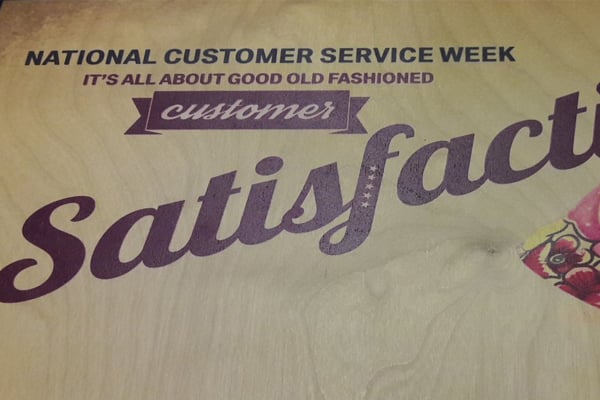Wood is a truly timeless material.
Pre-dating almost every other substrate, it possesses a rustic charm which transcends the generations.
Incorporating that classic look into print work however comes at a premium. And sheer cost explains why a growing number of designers now gravitate towards one of MDF or Plywood in its stead.
Real wood alternatives, their impact does not come at the expensive of your marketing, nor personal budget.
So, let’s take a closer look at both substrates in more detail…
Materials
MDF stands for Medium Density Fireboard. Consisting of bonded wooden fibres broken down from either hard or softwood, it truly came to prominence in the 1980s.
Once paired with wax and a resin binder, what is effectively sawdust is exposed to heat and pressure, creating the panels we’re all so familiar with.
Plywood is composed of multiple layers of wood veneer. These are glued together at a 90-degree angle and along the grain. The quality of plywood is nearly always determined by the number of veneers behind it.
As well as representing eco-friendly sheet materials, both MDF and Plywood lend themselves to print processes.
Indeed, the pair can be digitally and screen printed to a high quality and machined thereafter, making for pieces both unique and eye-catching.
Digital Printing

Large flatbed printers transfer a digital image directly onto MDF, the same way they do on to solid wood that has been treated with an ink-receptive coating.
A nice visual effect is created as the ‘grain’ shows through where a white backdrop would ordinarily appear. This is of course bespoke, given no piece of wood boasts the same grain pattern.
While this creates a much sought-after natural look, some prefer a standard white backdrop and therefore deploy full coverage white ink to create typical layering.
However you reach the final product, it may be improved with either a gloss or matt varnish.
Given MDF and Plywood come in various thicknesses, mounting options are greatly simplified. As for finishing, this can take the form of double-sided adhesive, Velcro or magnetic tape – depending on the application.
Likewise, the two materials can be printed onto both sides.
Screen Printing
When screen printing onto MDF or Plywood it’s important to consider the roughness of the material. Those hoping to create high-quality prints need to pair a high mesh screen with a smoothly grained piece of wood.
The more temperamental the texture, the less even the print.
Otherwise, the process is unchanged. A screen is coated in ink before a squeegee is applied. Several pass overs are needed to ensure ink clears the screen.
A drying period is then required to ensure the ink is fully cured.
Advantages of MDF and Plywood Printing

There are several benefits to adopting one of MDF of Plywood for a printed application. Chief among these is the durability of both materials. Whatever you create is likely to last the course given the substrates are sturdy.
Whilst being strong enough not to split both are surprisingly flexible. This often leads to them being fitted to unlikely surfaces, including curved walls. Similarly, they are easily shaped to open up any number of design possibilities.
These wood alternatives also possess great dimensional stability, meaning they’re unlikely to alter in size or shape when exposed to moisture. In fact, the pair boast excellent water resistance, convincing many to place printed products outside. Providing the appropriate treatment is applied, they will not succumb to warping.
Most importantly, perhaps, is the fact both MDF and Plywood make for cost-effective print materials. They represent a cheaper alternative to wood, without really compromising on quality. To the untrained eye they resemble the real thing.
Applications
As for how MDF and Plywood can be utilised, the applications are many and varied.
Standees and cut-outs are regularly created this way and used to great effect at the likes of exhibitions and trade shows.
Imaginative signage can also be realised with wood or a wood alternative. The fact both can be shaped and engraved means great 3D designs can be installed throughout an office or workplace.
A-Boards are a classic example of MDF being used to great effect, directing footfall towards a nearby shop or restaurant. It is certainly the denser of the two.
Those hoping to distinguish themselves from the competition may print business cards onto one of these two materials. These warrant a second look, unlike the majority of standard 3.5 x 2 inches cardstock designs handed out and just as quickly forgotten.
More ambitious applications include custom tabletops which can encompass patterns or branding. These could be scaled up to make permanent structures and furniture. And it’s not uncommon to see wood effect printed panels, whether these are used for office partitions or trade show stands.
While all of the above can be printed to a high quality it’s worth remembering anything transferred to MDF or Plywood is not meant to replicate the image exactly. In much the same way as real wood, this will look bespoke, almost like an artists’ impression.
And for many that’s the attraction. The wood look is vintage yet fresh, universal yet unique. Modern print tables and finishing technology mean it can re-imagined in some quite brilliant ways. MDF and Plywood have opened up a world of design and print possibilities a growing number are taking advantage of.


